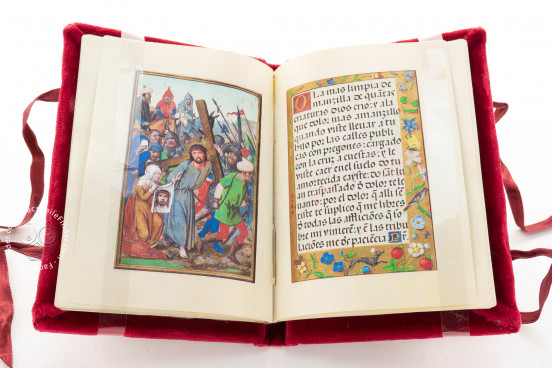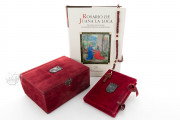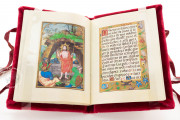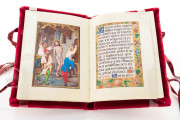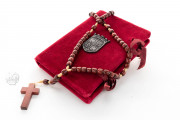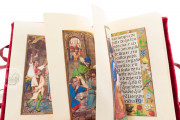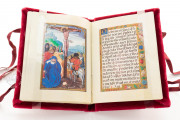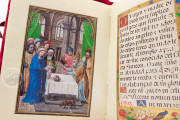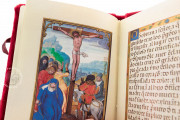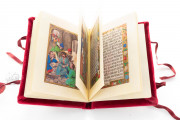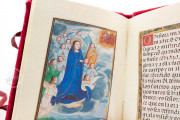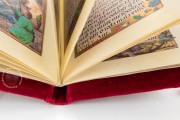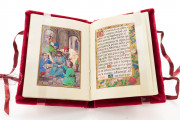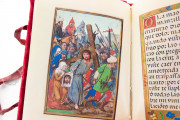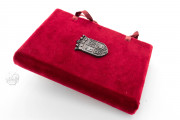The Rosary Psalter of Joanna of Castile is an illuminated manuscript of Christian prayers in Spanish addressed to the Virgin Mary, each to be followed by a recitation of the Lord's Prayer (Pater noster) and ten utterances of the archangel Gabriel's address to the Virgin at the Annunciation (Ave Maria). The result is 150 Ave Marias, equal to the number of psalms. Created in Bruges around 1525, it owes its nickname to Joanna I, Queen of Castile, known as Joanna (or Joan) the Mad, who may have been its intended recipient. It boasts sixteen full-page miniatures by the Flemish master illuminator Simon Bening.
The miniatures are intimate in scale (less than 9 cm high) as befits images intended to aid private meditation. Their quality and detail encourage prolonged contemplation. The text pages feature borders of trompe l'oeil flowers, birds, and insects set on gold grounds, also worthy of extended consideration.
Subjects from the Life of the Virgin
Each prayer of the rosary psalter is focused on a "mystery" in the life of the Virgin, and each is paired with a miniature depicting that event. The five joyous mysteries celebrate events in the infancy and childhood of Christ, beginning with the Annunciation to the Virgin (Boston, fol. 1v). The five sorrowful mysteries are keyed to events of the Passion of Christ, and the five glorious mysteries to the Resurrection and subsequent events up to the Coronation of the Virgin (Boston, fol. 13v).
The final miniature depicts the empty cross in a deep atmospheric landscape. The three women leaving the empty tomb are shown in the middle distance, and the walled city of Jerusalem and steep mountains are in the far distance (Boston, fol. 14v).
Masterful Intimate Scenes
Simon Bening crafted the miniatures to capture the viewer's attention, sometimes through intimacy and sometimes through uncompromising violence. The painted frames, either plain or featuring fictive tracery, provide a window into the world of the Virgin, Christ, and Heaven. The paintings date from the decade of the artist's technical apogee and are characterized by his signature round-faced female figures with small mouths and a sympathetic approach to the adult Christ.
Elegant Gothic Script
The text is written in Gothic Rotunda, as is common in Flemish manuscripts intended for Iberian patrons. It may be the work of Antonius van Damme, who is known to have collaborated with Bening, although this attribution is disputed among scholars. Each prayer with cues to the Pater noster and the Ave Marias fits on a page so that there is a regular sequence of miniature facing prayer, except for the final miniature.
Uncertain and Incomplete Provenance
The manuscript was unquestionably intended for a Spanish speaker. It is not, however, universally accepted that the book was made for Joanna. The first certain owners are Henry Yates Thompson (1838-1928), who donated two leaves of the book to the Fitzwilliam Museum in 1895, and Harriet Cupples, who donated twelve leaves to the Boston Public Library in 1917. Two more leaves were acquired by the Boston Public Library in 1981.
We have 1 facsimile edition of the manuscript "Boston-Cambridge Rosary Psalter": Rosario de Juana La Loca facsimile edition, published by Patrimonio Ediciones, 2004
Request Info / Price
